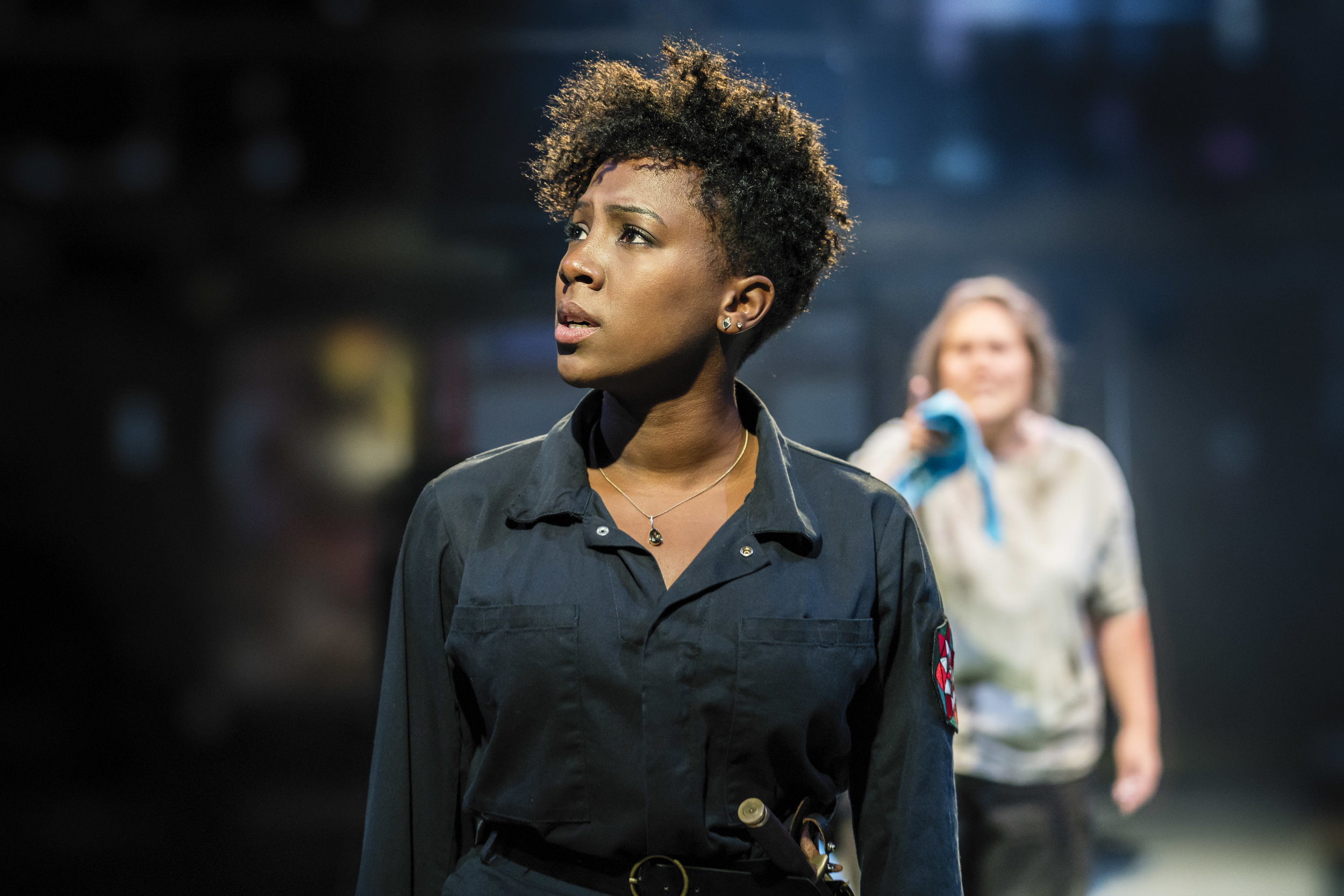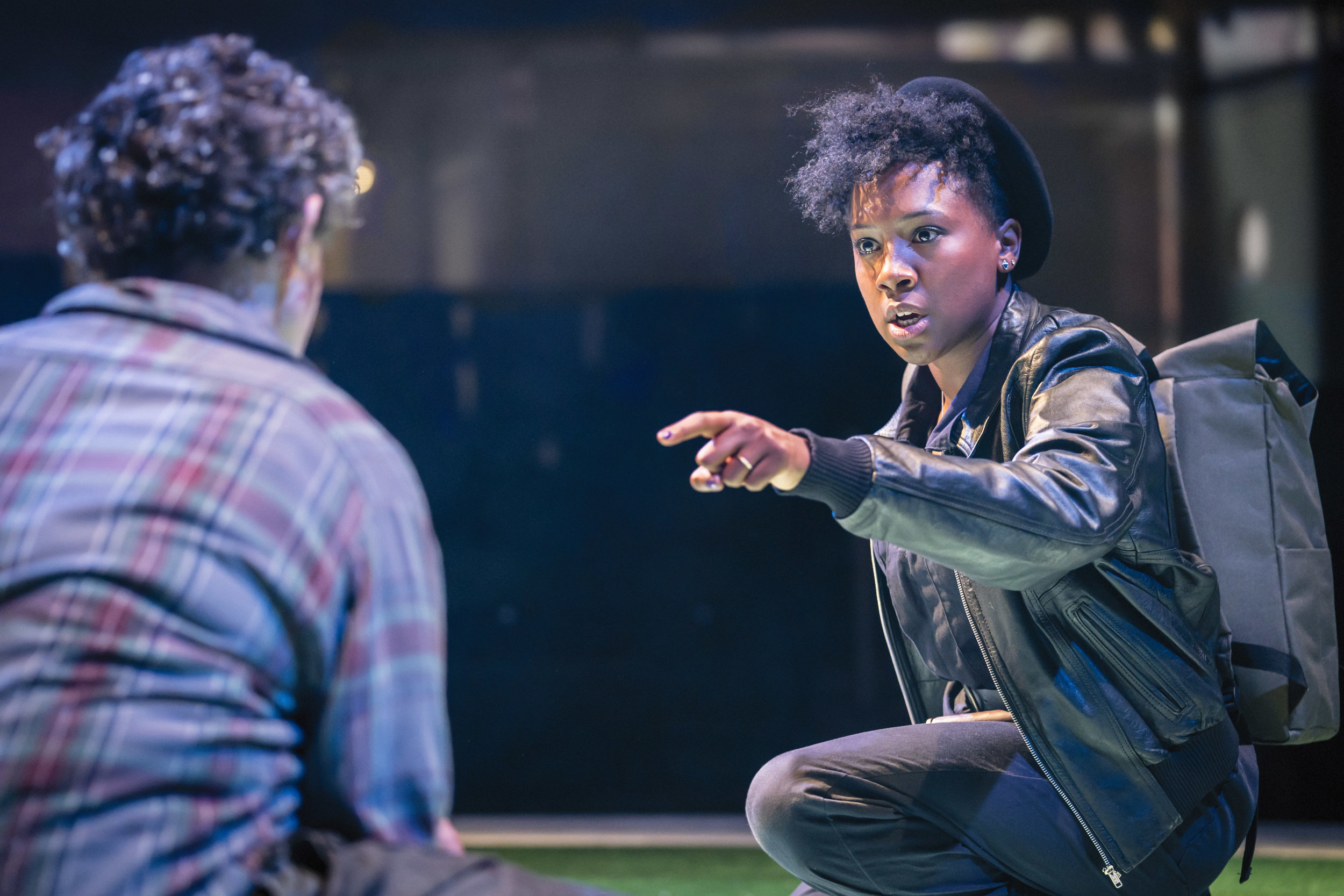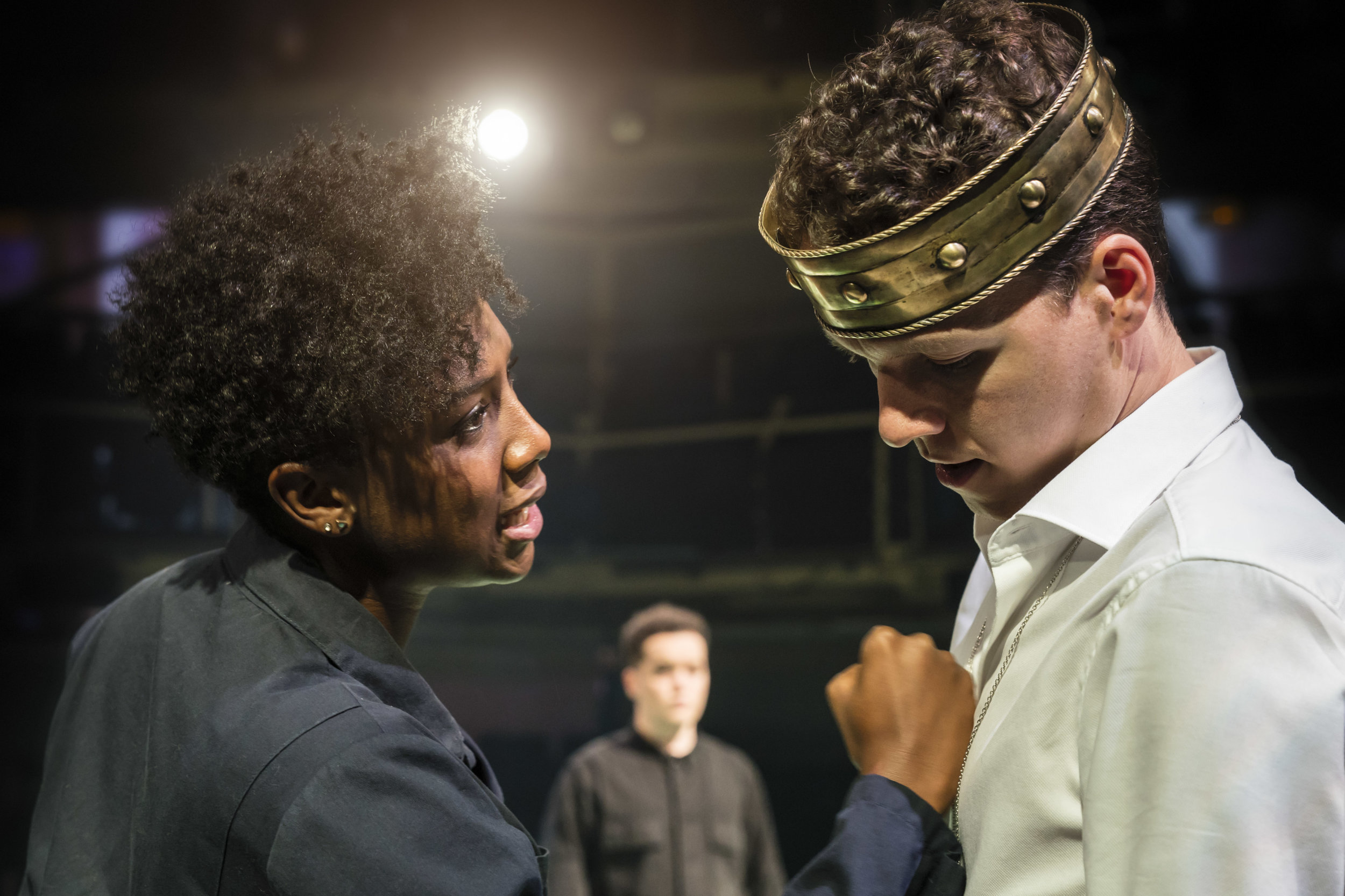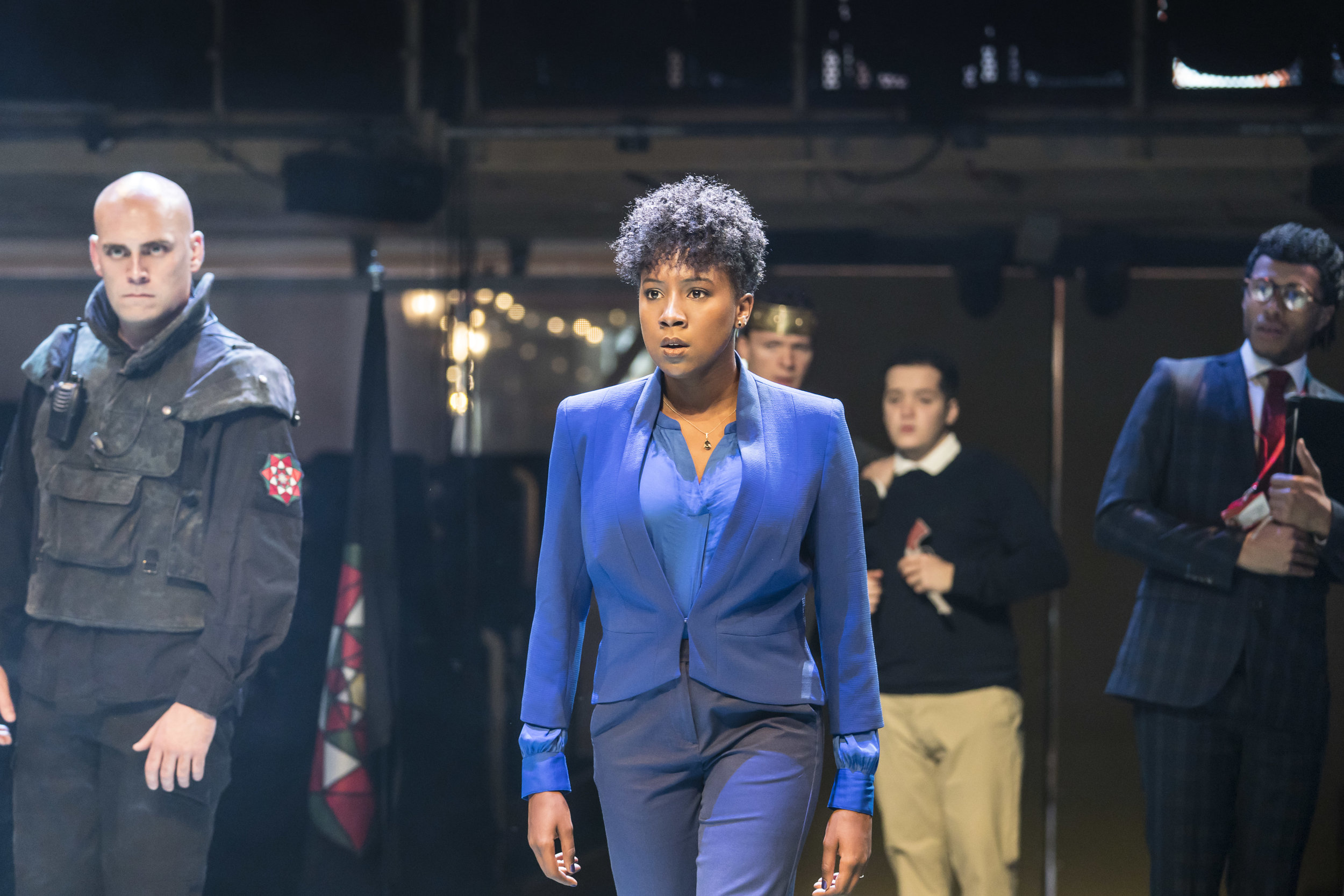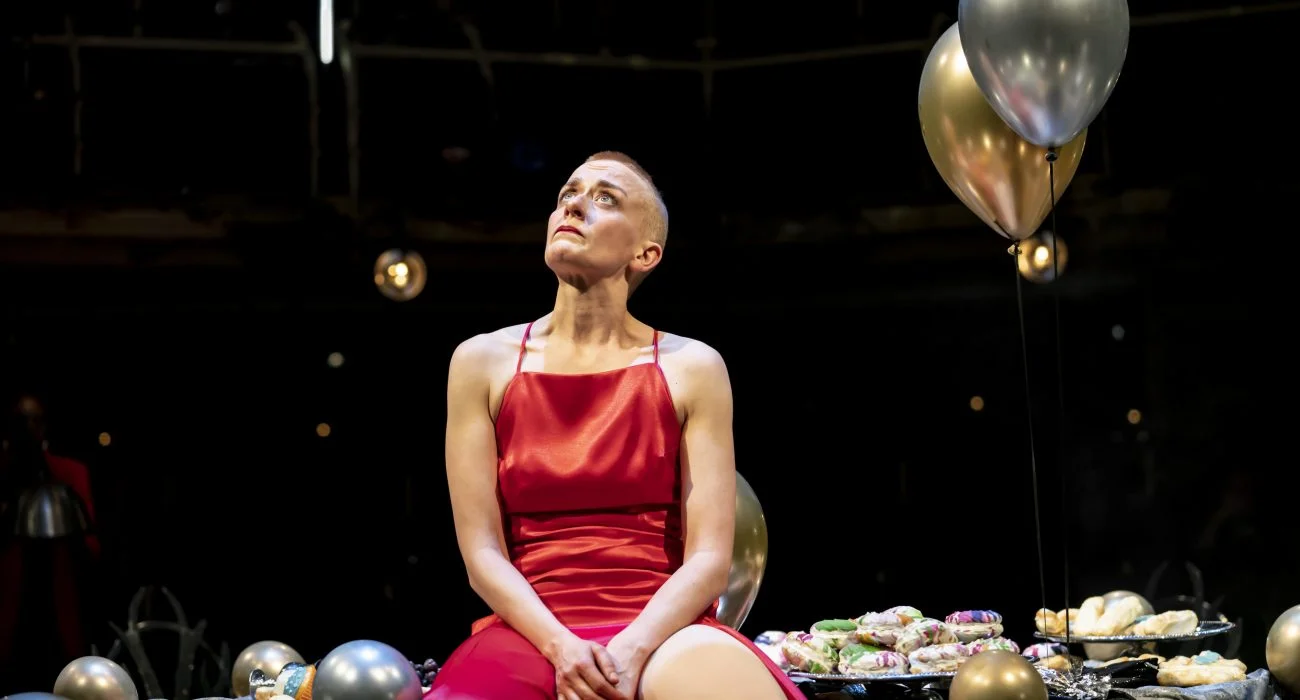Queen Margaret: Putting the SHE in Shakespearean Drama
The eponymous Queen is interestingly mute for the first few scenes of this feminist re-framing of history. We are firmly grounded in the patriarchal realm of Renaissance drama (indeed, all drama), ready to be sprung into a new orbit.
In the title role, we watch Jade Anouka evolve from innocent naivety and an infectious smile, into a rampant warrior who takes no prisoners. Her commanding presence is the gravitational epicentre of the entire production. Anouka fearlessly takes to a role usually reserved for men, filling the shoes of a tragic hero of epic proportions.
Reframing a familiar story, writer Jeanie O'Hare carefully toes the line between lyrical verse and didactic clarity. The comprehensive 'who's who', alongside the inclusion of colloquial quips, makes a complicated history accessible for all.
Adding a supernatural level as an adjunct to the norms of Shakespearean drama, Margaret has a waif-like confidant in the ghost of Joan of Arc. Played hauntingly by Lucy Mangan, this ethereal character holds a mirror up to Margaret, her French heritage and her conscience. Scenes between the two are balanced by Anouka's gravitas and Mangan's childish, pixie pitch; they explore depths of character, free from the obligation to dictate historical narratives. This female frame is one of the crowning glories of the production.
Similarly shaping the action, Hume, played by Helena Lymbery, fulfils the Greek choric function effortlessly. The conversational, northern humour Lymbery lends to the role brings some light and laughter to a second act which is, perhaps unavoidably, played out on a consistent level of intensity.
Female performances sing out in this production, amidst male characters that are easily interchangeable. The unpredicted set, seemingly modelled on an LED-lit dart board, acts as a canvas for incredibly emotive performances. (However, there are several moments, such as the Sons of York playing video games on beanbags, that stand at odds with the gravity of the piece and feel somewhat dispensable as a cheap laugh.)
King Henry, played by Max Runham, is suitably dithering, in apt opposition to his increasingly fierce wife. Echoes of Lady Macbeth resound. But Margaret is too headstrong to be taken by paranoia; she takes control of her husband, her son and the kingdom. This lady is not for turning.
Anouka is enchanting in her multitasking: nursing a baby, dictating state letters and dancing at the thought of some real, French cheese, combine to define a well-rounded character in a single scene. This performance validates exactly why this Shakespearean history needed a feminist revival.
In order to maintain strong female figures at the centre of all action, the Duke of York is cast as a fierce matriarch. Lorraine Bruce is stern, authoritative and masculine. Yet, transforming on an opposite trajectory to Margaret, we see Bruce soften and the two powerful women's paths intersect in a moment of self-realisation. "Women should be soft", pleads York, to her Queen. Margaret stands, firm, her eyes swimming with conflicted conscience, in one of the play's most potent moments.
Through the shape of the narrative and some impeccable characterisations, we are drawn in to Margaret's loveable nature from the outset and held there. Design by Amanda Stoodley sees Margaret's dress become increasingly masculine just as, under Elizabeth Freestone's direction, her mannerisms shift into contorted animalism. Yet, even as she transforms, becoming power-hungry and villainous, Margaret (and Anouka) demands the audience's respect. She is rewarded with the pale clothes of redemption as the play passes the baton with a neat overlap into Shakespeare's Richard III.
This newly-written play fits seamlessly into the canon and makes one question: why has it taken this long to shine a spotlight on the great women of history?!
Queen Margaret plays at the Royal Exchange until 6th October. Find tickets online.

